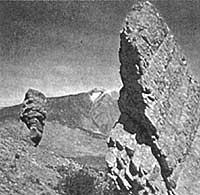Venom of the Mediterranean coast
1986/06/01 Aizpuru, Maria Luisa - Elhuyar Fundazioa Iturria: Elhuyar aldizkaria
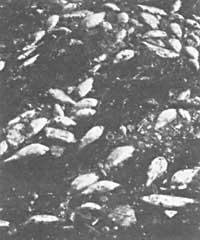
Today, the Mediterranean mushroom offers an amazing landscape: you can see yourself floating on a thick layer of sulphur, plastics, vegetable bark, aluminum foil... If to this we add a series of industrial waste and water sludge from urban collectors located along the French coast, the result is extremely painful.
In this poisoned desert, in which marine plants disappeared long ago, only a few unfortunate sea stars have managed to endure.
We must say and say that the animals and plants of the Mediterranean are about to die for the indifference of our civilization.
The research carried out for the study of bacteriological and chemical pollution has yielded worrying consequences:
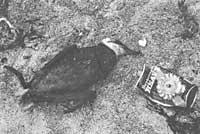
Thousands of liters of water poured daily to the coast directly from the sewers feed a large group of unknown bacteria.
For example, the 100 sewers from Frejus to Banol on the French coast throw waste from millions of tourists to the coast of Var. As a result, one more year, the bathroom has been banned on several beaches in the department of Alpes-Maritimes.
However, the most feared level is supported in the Gulf of Marseille. In fact, the drainage of Corfiu emits 200,000 m 3 contaminated without any type of purification.
Each liter of water that leaves the sewers carries about 4 million intestinal refrigerated. Sea water can be considered highly contaminated when it has 20,000 liters of colibazyl! ! News News News
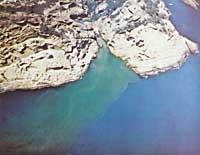
This collector is becoming an advertising device that extends through Marseille, often up to 6 km from the coast.
To deal with this invasion, the self-management capacity of plankton and marine bacteria has been totally overcome, so the different pathogens germinated are multiplying in the vicinity of the beaches without any kind of impediment.
The clearest examples are the teat nosbacil, botulism, the germinates of cholera and especially salmonella. They have become close friends of the seafood and every year they are responsible for several typhoid fever and gastroenteritis.
However, that tourists know it clearly: at most, these annoying visitors will attack with suffering through the creation of slopes or slopes, or leaving a remnant of eczema, or of an annoying sinusitis. They will make them lose a maximum of a few days of vacation for a food poisoning, no more! Mediterranean pollution continues without killing men.
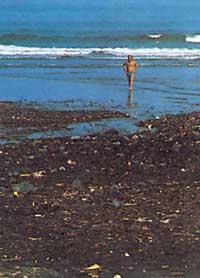
But for fauna and vegetation the opposite occurs. In this sea of land there is no renewal of the waters of the bottoms, nor changes of tide or great marine currents. Therefore, the underwater life develops mainly on the coast, in places where vegetable plankton can be buckled with mineral salts of the coast and where they can receive enough light to expand or expand.
This group of pollutants is responsible for the reduction and elimination of the Mediterranean ecosystem.
In the first place, the meadow of Posidoni, true underwater lung (produces daily 10 l. of oxygen per m 2) that lives and feeds hundreds of small microalgae and invertebrates in these plants with flowers, and which is a privileged place for the fish, is suffering in recent times a huge decline throughout the coast. The meadows near the collector of Corfiou (Marseille) and Cap Silie (Toulon) disappeared completely long ago and disappeared for a long time. In fact, this marine green of m 2 needs a century to grow again.
But urban industrial waste is not, however, Rivers carry between 100 and 150 tons of pesticides every year to the Mediterranean. A third of them DDT (banned since 1969). This chlorinated organ has a duration of 30 years.
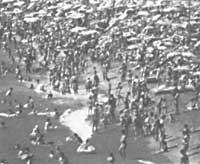
These products are very stable in sea water and adhere to the fatty and nervous tissues of living organisms. And what a disgrace! At last they are much more toxic to marine animals than to mosquitoes!
100 liters of sea water are equivalent to a mixture of a thousand grams of DDT to paralyze or kill crabs in a few weeks. They are insecticides, responsible for ulcers and liver lesions that suffer 1% of the fish. Insecticides prevent the photosynthesis of algae and, therefore, the respiration of many animals.
As for seafood, it must be said that the only culprits of this evolution are those forced to filter the water of the area. Rivers and streams filled with insecticides aggravate the slaughter.
A kilo of molluscs collected on the French coast can contain 10 mg of insecticides, that is, 70,000 times more than sea water.

If to the aforementioned factors we add the telluric discharges of industrial metallic and radioactive waste and hydrocarbons coming from the marinas, it is evident that the situation has arrived unsustainable.
For the cleaning of the waters, the installation of adequate wastewater treatment plants on the coast should reduce this massacre, but we must act quickly if we do not want the Mediterranean at the beginning of the 3rd millennium to become a dead sea.

Gai honi buruzko eduki gehiago
Elhuyarrek garatutako teknologia




